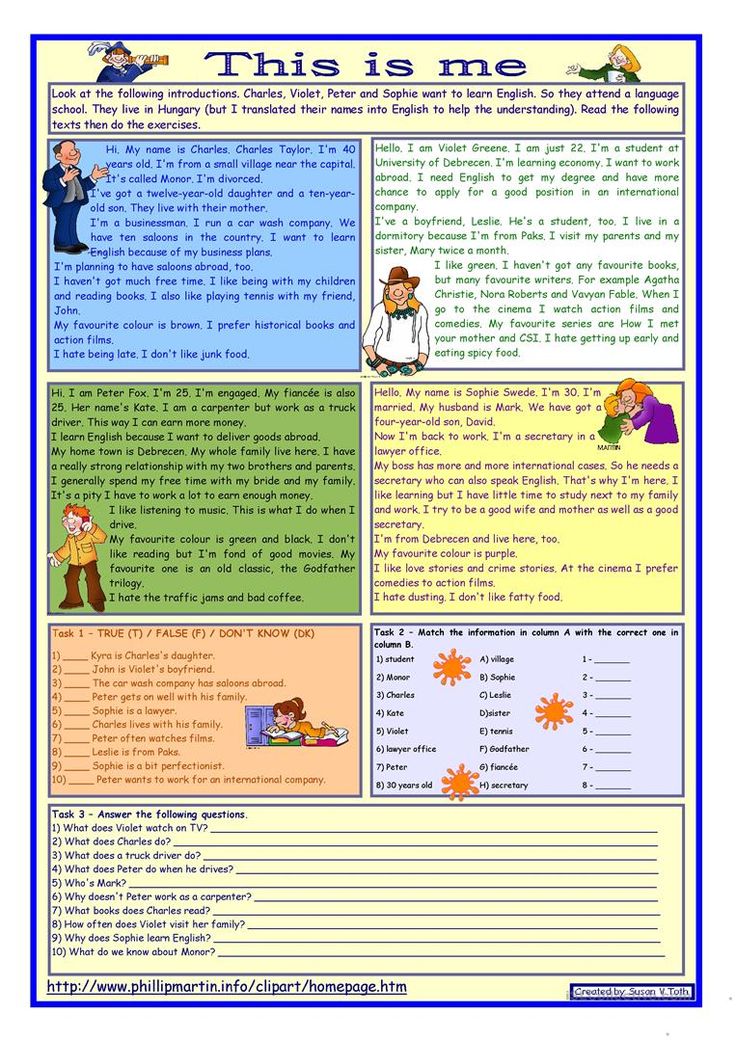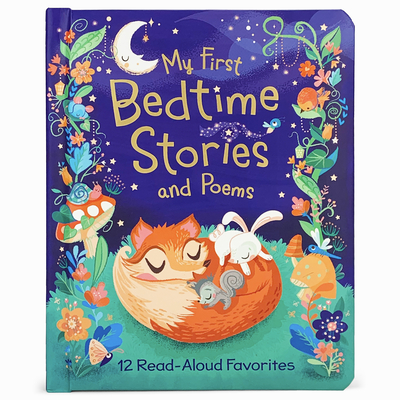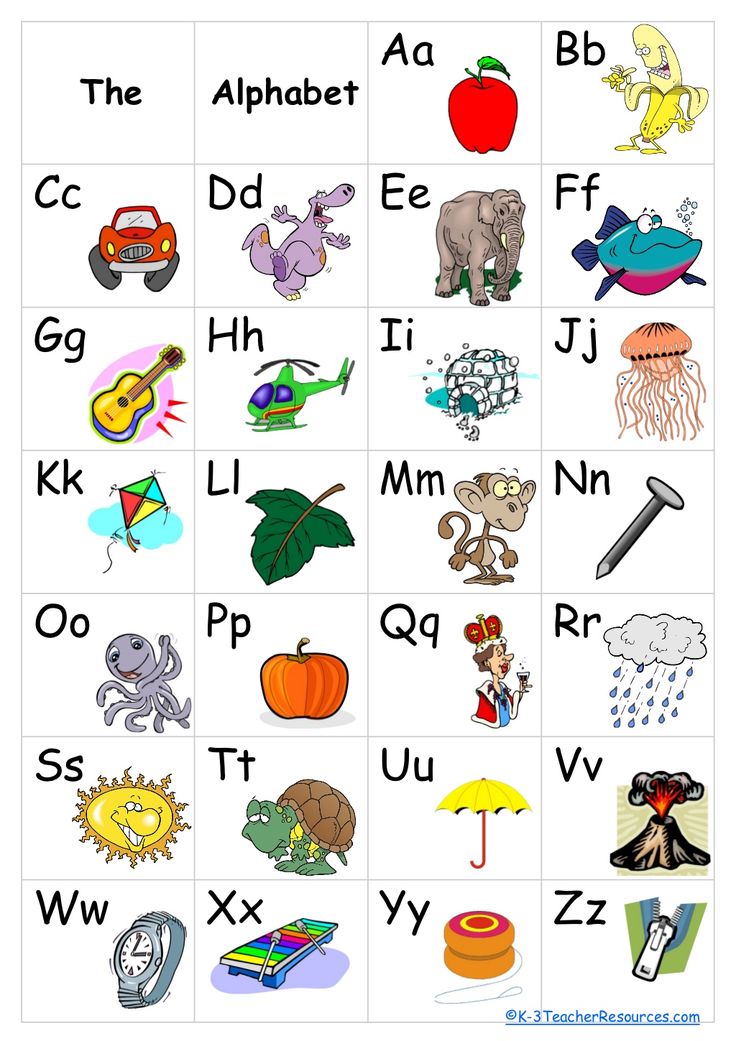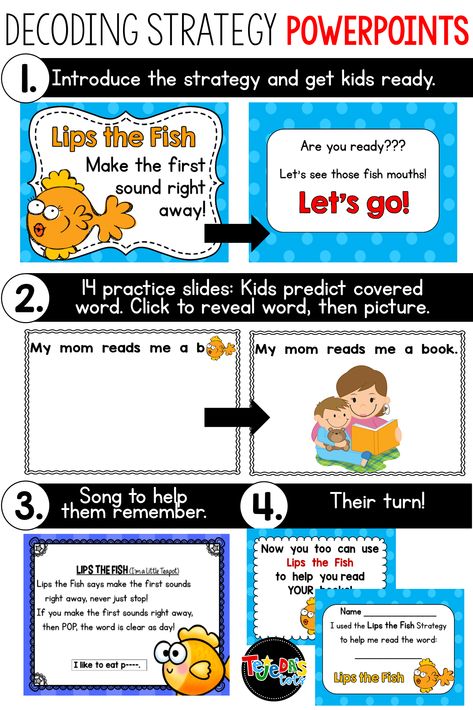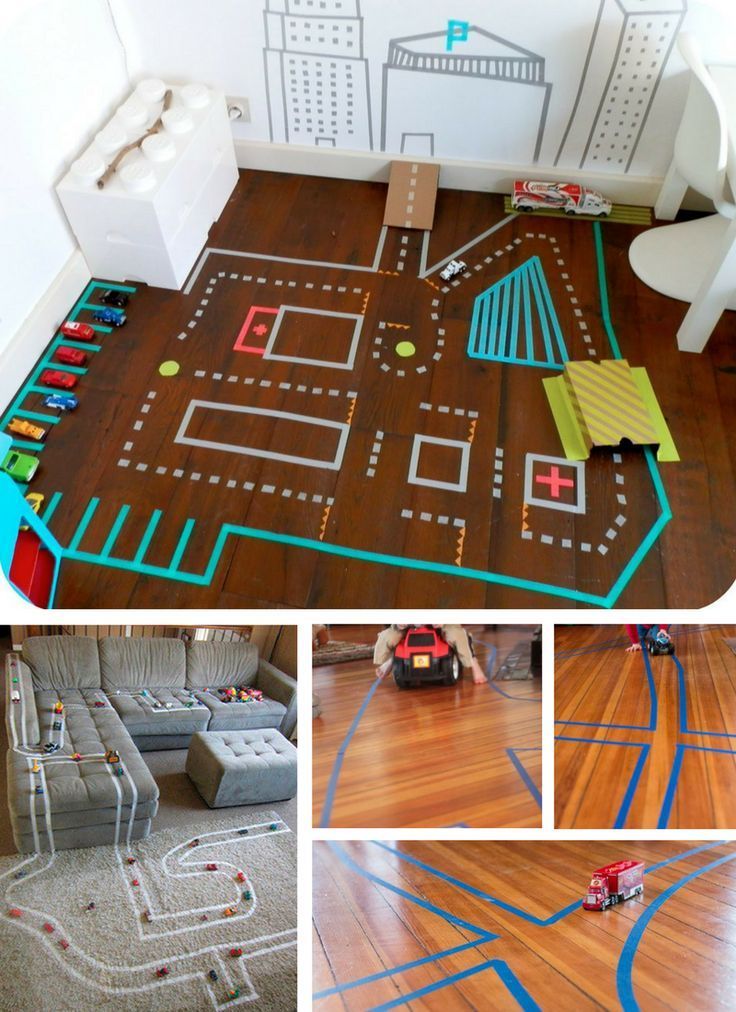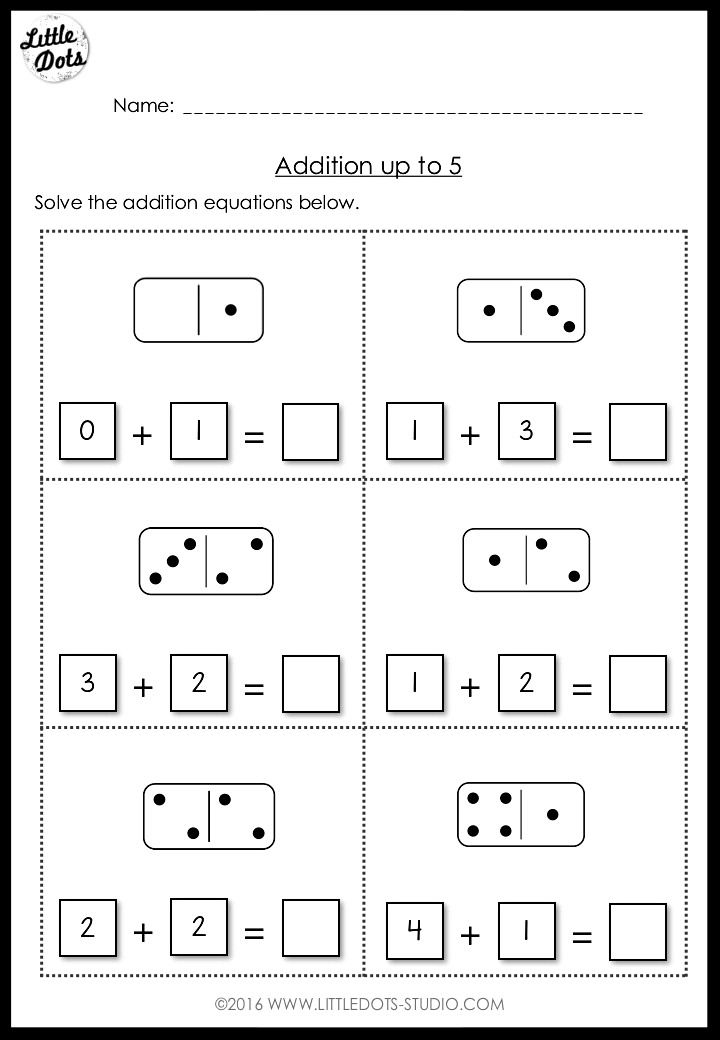Help with reading comprehension for adults
Improved Reading Comprehension for Adults | Strategies
Child reading comprehension is often a focus at school, but reading comprehension for adults can also be an issue.
The importance of reading comprehension doesn’t go away when you’re an adult.
It helps you learn and understand what you read when you go to college, take classes, or learn new content at work. Strong comprehension allows you to understand contracts and agreements for things such as job offers and loans. It also helps you get more enjoyment out of reading for fun.
If you or another adult in your life shows signs of reading comprehension problems, try these strategies to improve comprehension.
1. Learn New Vocabulary
Your vocabulary is a large part of your reading comprehension. You need to recognize and understand the individual words before you can comprehend the overall text.
Growing your vocabulary helps you feel comfortable with a wider range of words. When they come up in reading passages, you know what they mean. You don’t get stuck on figuring out what the word is and what it means.
This allows you to keep reading smoothly without lots of starts and stops. That reading fluency helps you focus on the overall meaning of what you’re reading to improve comprehension.
Reading lots of books helps grow your vocabulary. If you come across a word you don’t know, write it down. Look up the meaning so you’ll have that knowledge for next time.
Researching new topics that interest you is a good way to come into contact with new words. Find the definition of those new words as you hear them.
Spend time writing, focusing on using new and interesting words. Use a thesaurus to find alternative options for common words in your writing.
Crosswords and other word games offer a fun way to expose yourself to new words.
Another option is a vocabulary word of the day app you can get on your phone. You automatically get a new word each day to continue exposing you to new vocabulary. Some words might be things you never use again, but if you come across some of them, you’ll already know what they mean.
Some words might be things you never use again, but if you come across some of them, you’ll already know what they mean.
2. Remove Distractions
It’s tough to understand what you’re reading when you’re surrounded by distractions. When you’re reading and want to focus on comprehension, move to a location where you can focus fully on what you’re reading.
Put your phone away or shut off the notifications while you read. If you check out every ding, you’ll forget what you’ve read and have trouble comprehending the text overall.
Move away from lots of activity, such as people watching TV or talking. A bedroom, office, or other quiet room in your home may be ideal. Libraries also tend to work well for finding quiet spots away from distractions.
3. Prepare Before You Read
Start asking questions and thinking about the text before you read to prepare your brain for comprehension.
If you’re reading an informational piece, such as a textbook, scan the chapter first.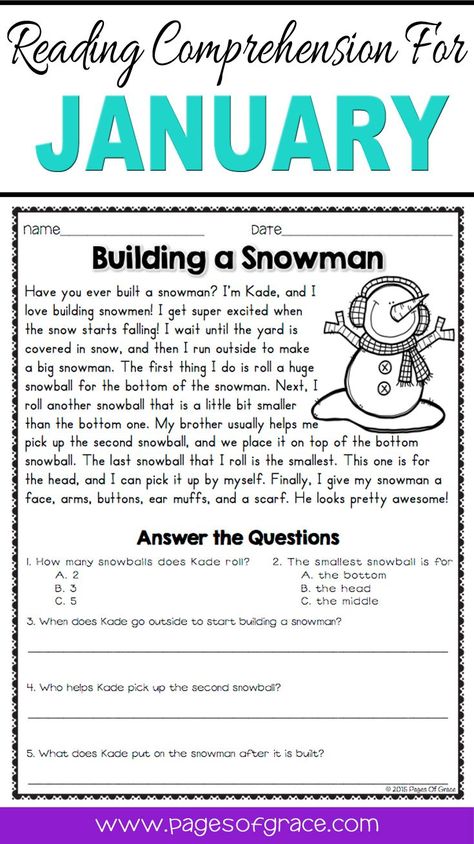 Read the headings, subheadings, captions, and questions at the end of the chapter. This helps you understand what you can expect to read.
Read the headings, subheadings, captions, and questions at the end of the chapter. This helps you understand what you can expect to read.
For any type of text, think of questions that help you focus, such as where the book takes place, what topic it covers, what themes will show up, and what the main topic is. You don’t need the answers to those questions before you start reading. Simply get them in your head, so you start looking for the answers as you read.
4. Slow Your Pace
If you rush through reading, you’ll likely miss the details and context clues that make it easier to understand. Slowing down your reading pace lets you pick up on more of the words so you can catch more of the meaning.
One way to slow yourself down is by reading aloud. It takes more time to say each word out loud. You can’t glance over some of the words like you do when you read silently.
Reading aloud may also help you remember what you read better. You’re actively using a cognitive process that combines reading and forming the words, which can help with memory.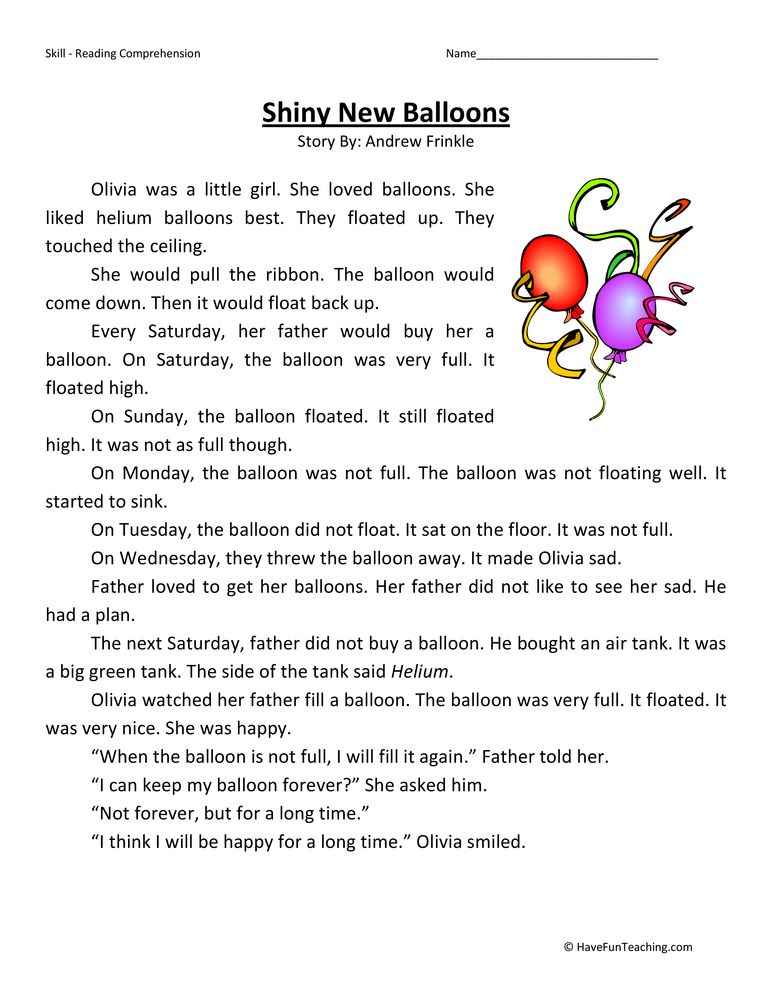
If you read long texts, consider spreading it out over more than one day. Trying to read too many chapters in one night can make you forget what you’ve read.
5. Break It Into Chunks
Instead of reading through a large passage all at once, break it into smaller chunks. This works especially well for a complex text that’s difficult to understand.
After each paragraph or subsection, make sure you understand what you just read. If you push through the entire chapter before you realize you don’t understand it, you’ve wasted your time and will have to go back and reread. Text typically builds off of what you’ve read, so if you don’t understand the beginning, the rest won’t make sense either.
6. Question What You Read
As you’re reading, continue asking yourself questions about what’s happening, so you focus on the meaning.
Look for context clues if you get stuck on a word. That means you use the information surrounding the word to figure out what it means.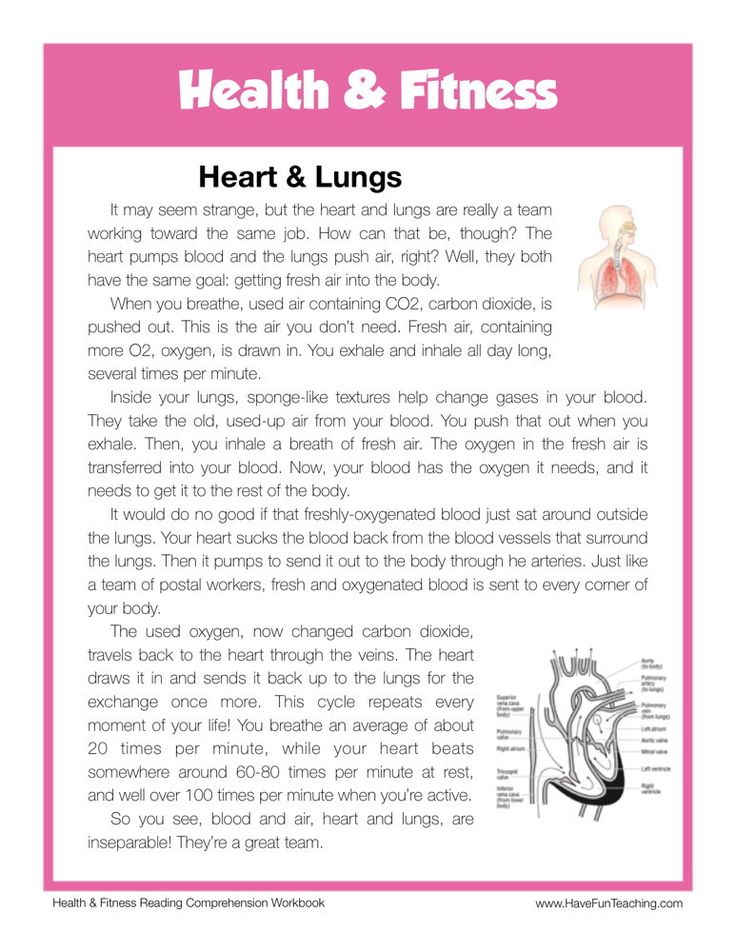
Question yourself on the main idea of each paragraph, section, and chapter as you read. Looking at the main idea instead of only focusing on the little details can help you understand the overall picture the author creates.
Taking notes as you read can also help you remember key points. Just don’t stop too much to take notes, or you’ll interrupt your flow, which may interfere with your comprehension.
7. Reflect on the Text
Don’t just stop reading and move on with your day. Think back on what you read to understand it better.
Look back at the questions you created before you started reading. Can you answer those questions now?
Write down a quick summary of what you read to make sure you understand it. When you summarize, you rephrase what you read in your own words to show you comprehend it.
Improving Reading Comprehension for Adults
Reading comprehension isn’t just a concern for kids. Building reading comprehension for adults can help you strengthen your understanding.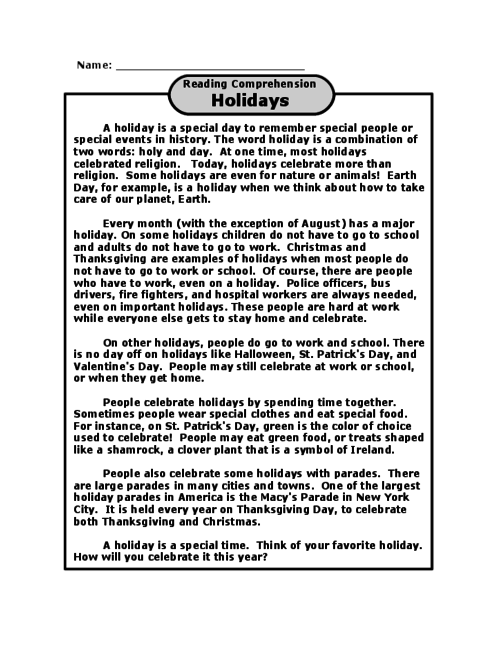 It can help you learn more efficiently and make more informed decisions.
It can help you learn more efficiently and make more informed decisions.
Check out our reading comprehension mastery program for more information.
Click the button below to schedule your free call.
How to Improve Your Reading Comprehension as an Adult
The ability to process and retain information from texts: it’s not just for kids. Reading comprehension, which has been defined as “the act of translating text into mental representations”, has also been described as the ultimate goal of reading. But the bulk of research on reading comprehension focuses on children. When it comes to adults, consensus-level findings and proposed suggestions are still emerging.
This also applies to non-text-based forms of reading. So this article mainly applies to people reading visually, rather than via listening, say, or Braille. The suggestions compiled here aren’t exhaustive.
Slow Your Roll
The good news from the research that does exist is that older adults do just as well as younger adults, or better, in many aspects affecting reading comprehension.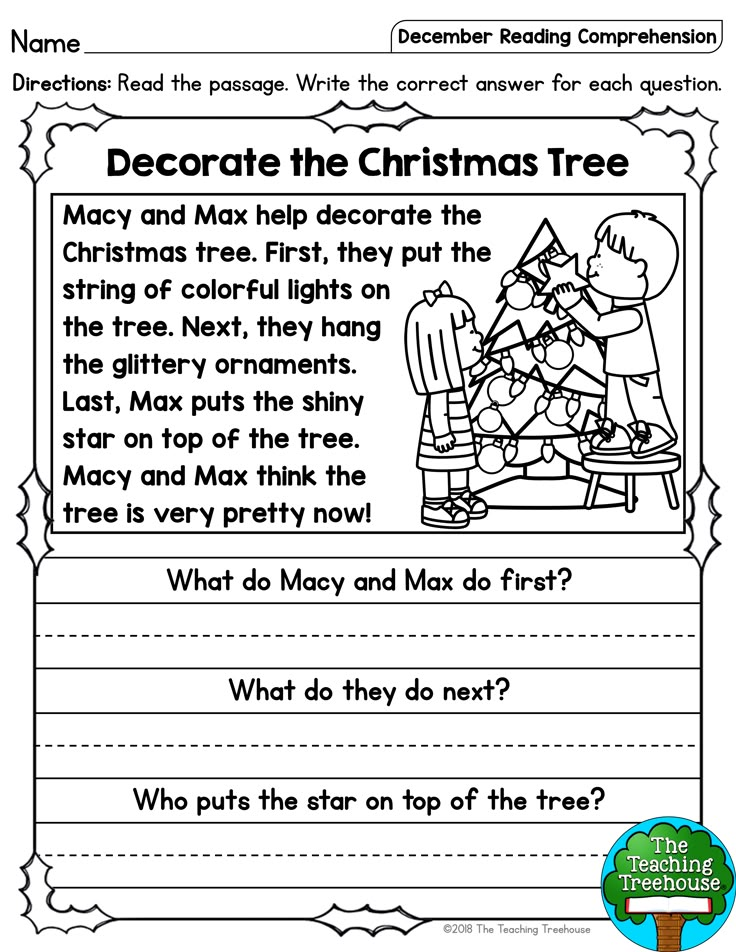 While older adults have more general knowledge they can apply to a particular situation in a book, which helps them to understand it more readily, it takes them longer to encode new knowledge. So some aspects of reading performance do decline with age. Refusing to acknowledge this decline can worsen understanding.
While older adults have more general knowledge they can apply to a particular situation in a book, which helps them to understand it more readily, it takes them longer to encode new knowledge. So some aspects of reading performance do decline with age. Refusing to acknowledge this decline can worsen understanding.
This applies, for instance, to ambiguous passages. Older adults need to call on more of the brain to parse complex sentences. Take this benign-looking sentence:
While Anna dressed the baby played in the crib.
In one study, 70% of younger adults interpreted this correctly: while Anna put on clothes, the baby was playing. (This sentence is basically a PSA for comma use.) However, only 50% of older adults did.
Because eye movement and cognitive patterns change with age, older adults take longer to scan and process text. When reading Chinese, which is visually complex, older adults take almost twice as long as young adults.
It’s theorized that some people resist this, trying to keep the same reading speed that they’re used to. They might skip or guess more words in a sentence, for instance. Yet speed reading doesn’t improve mastery of information. A simple strategy for retaining more of what you read is just to accept (sniff) that you can’t race through books as quickly as you used to, and slooooow it down.
They might skip or guess more words in a sentence, for instance. Yet speed reading doesn’t improve mastery of information. A simple strategy for retaining more of what you read is just to accept (sniff) that you can’t race through books as quickly as you used to, and slooooow it down.
The ends of clauses and sentences are especially good places to slow for a beat. Psychologists refer to this as wrap-up, and more time spent on wrap-up tends to be associated with better recall of text. So a rule of thumb could be to pause after a sentence, especially a complicated one, to make sure that you’ve digested how the different concepts relate before moving on. Sure, it might be hard to do the literary equivalent of chewing each morsel of food 40 times, especially when reading a page-turner, but you’re likely to keep the (literary) food down longer. (This particular metaphor is belabored and unwieldy, for instance, so it would have been useful for a reader to devote some extra time to wrap-up at the end of the previous sentence.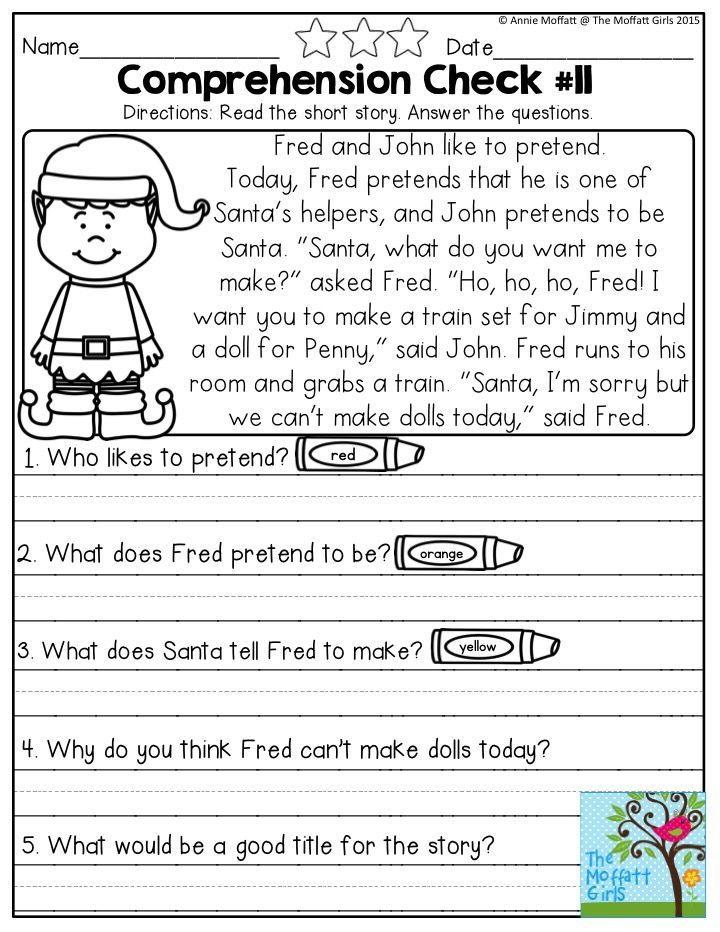 )
)
Practice the Basics
“Print exposure” (how much someone reads) contributes to “crystallized intelligence” (accumulated knowledge, reasoning, and vocabulary). Crystallized intelligence helps people apply their reading skills. And print exposure plays an important role in word-reading processes, for children and adults alike.
This is pretty intuitive, even circular, stuff: read more and you’ll get better at reading. But sometimes elementary things get overlooked. So even though adults tend to have larger vocabularies and better word recognition than children, enlarging your vocab and generally practicing reading is likely to improve reading comprehension over time.
Activate the Senses
All that highlighting you did in history class may have helped. Highlighting, underlining, color-coding, note-taking, and other forms of active learning can help to identify the most pertinent information and enhance reading comprehension. But this is only up to a point.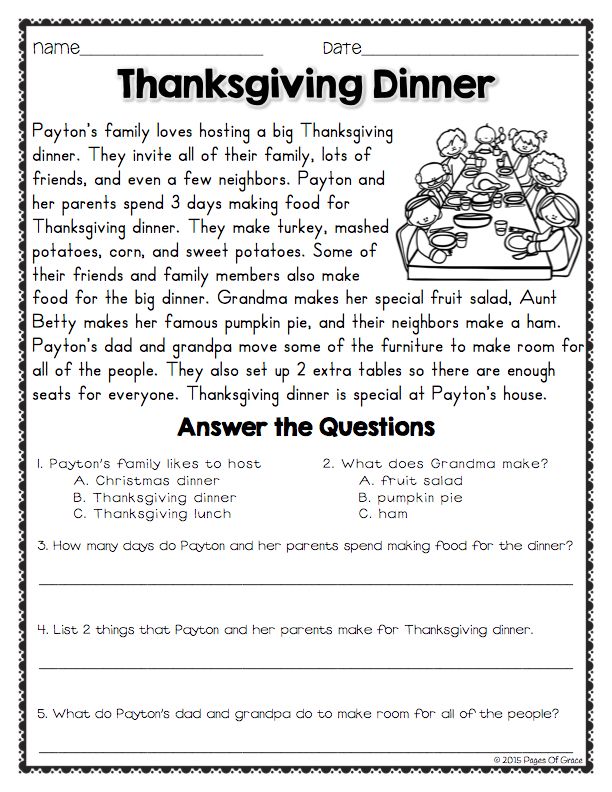 Excessive highlighting tends to defeat the purpose, and actually limits comprehension.
Excessive highlighting tends to defeat the purpose, and actually limits comprehension.
In a potential blow to diehard digital readers, reading comprehension is still stronger in print than onscreen (although more research is needed on the exact mechanisms for this). But visual aids can help readers of all ages in all formats, such as seniors choosing prescription drug plans on a Medicare website. Reading more comics and imagery-rich texts may also help to activate more of your visual sense while reading.
It’s common for teachers to encourage young learners to make “brain movies” while reading – in other words, to mentally visualize the scene being read. Some evidence suggests that this can help reading comprehension in adults as well.
The sounds of language are also related to reading comprehension skills, for both deaf and hearing adults alike. So to become a more effective reader, you can pay more attention to how letters correspond to sounds. This might involve reading poetry aloud or making handshapes to correspond to rhymes.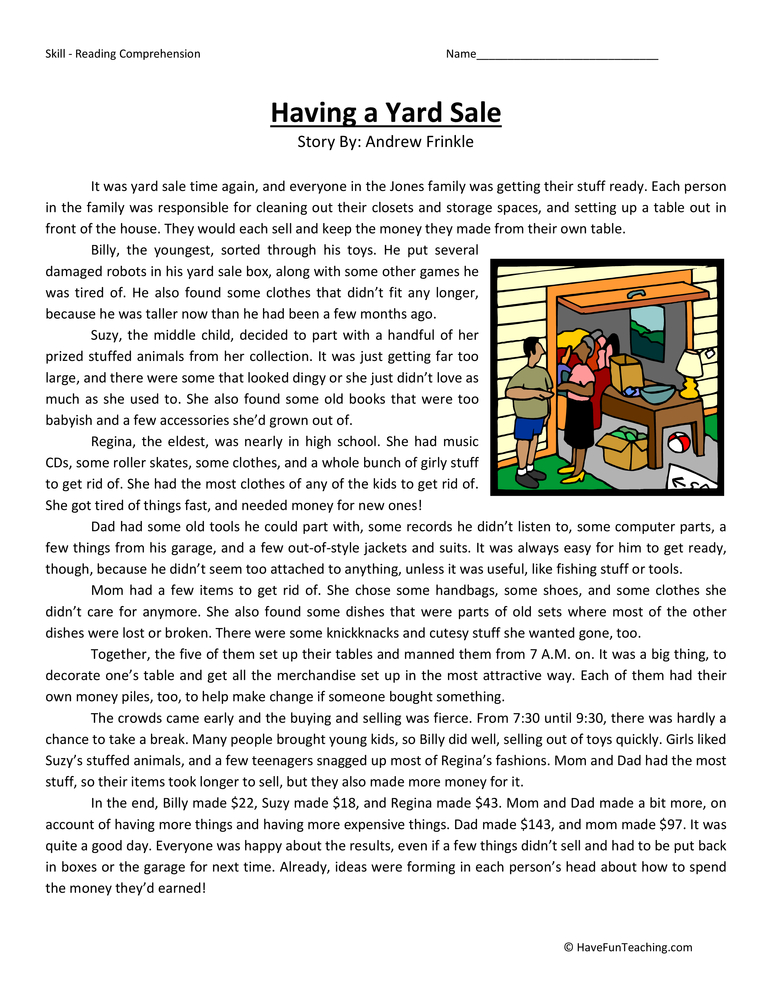
Think About Reading
Annotation is a tool for active reading, or reading with a specific purpose. Along with the physical markings on a text, you can read actively by, for instance:
- summarizing or rephrasing what you’ve just read
- explaining it to others
- answering questions about it (looking up book club questions might be a useful aid here)
- assessing the difficulty of a passage
- making predictions about what will happen next in a book
- thinking about how your background knowledge is helping you understand a piece of text, or where there are gaps in your prior knowledge
- relating what you’re reading to your own experiences
- making associations and comparisons
All these strategies are part of metacognition: essentially, thinking about thinking. It shouldn’t be a shocker that if you want to improve reading comprehension, you should think and plan for doing so. This can include setting goals and tracking progress.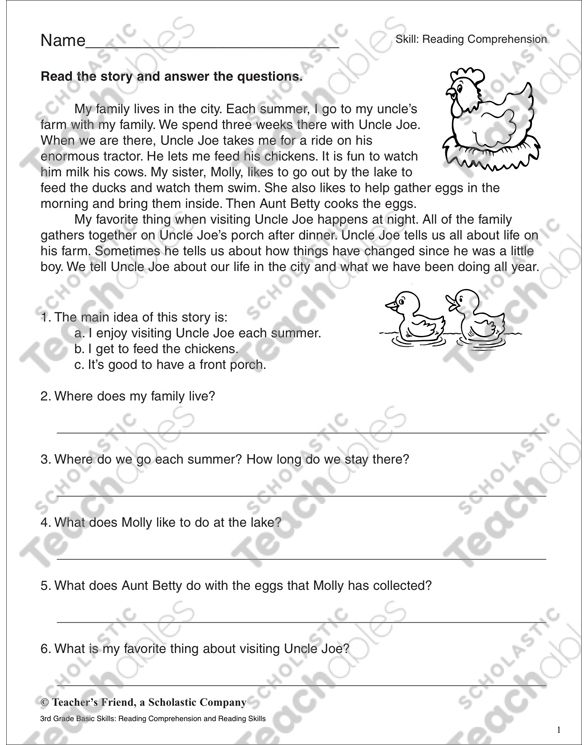 Basically, channelling your inner middle-schooler can help you retain more of what you read.
Basically, channelling your inner middle-schooler can help you retain more of what you read.
Choose Quiet Surroundings
If possible, you can help yourself out by optimizing your environment. Finding a calm and quiet space may help, for instance, given that sensory distractions take up your brain’s computing power – redirecting it from processing words. Of course, this may not be people for people in overcrowded living situations (no chill-out room), with little money (hard to linger in a cozy café when you can’t afford to eat out), or living in places with few public amenities (libraries, parks, and other free spaces).
This is useful in the short term, to master a single text. But it can also help in the longer term, because as mentioned previously, reading comprehension improves with practice.
Enhance Your Memory (Maybe)
In a nutshell, both short-term memory and working memory involve temporarily storing information in your mind, but working memory also allows you to manipulate that information.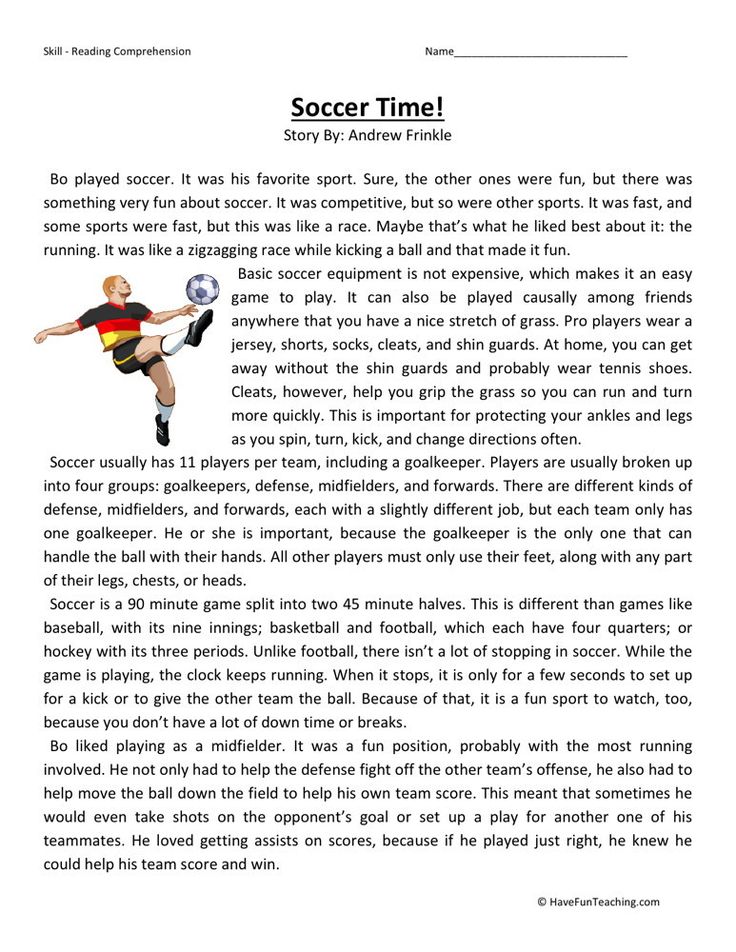 There are ongoing debates about which type of memory is more significant to reading comprehension. That’s likely to depend on factors like age, fluency, literacy level, reading disability status, and type of writing system (e.g. alphabetical or character-based).
There are ongoing debates about which type of memory is more significant to reading comprehension. That’s likely to depend on factors like age, fluency, literacy level, reading disability status, and type of writing system (e.g. alphabetical or character-based).
Focusing on memory may be less helpful in boosting adults’ reading comprehension, since memory declines with age and adults’ memory skills are harder to change than kids’. Researchers haven’t definitively found that working memory training helps with reading comprehension among adults. It may be that focusing on core skills will ultimately be more useful.
So keep exposing yourself to text, pausing to make connections, mixing it up with sounds and visuals, and giving yourself enough time to process information. Your relationship with reading comprehension is bound to change across your lifetime, and there are steps you can take to keep that relationship humming along. More effective readers tend to use multiple strategies simultaneously, for instance thinking about sounds and ideas at the same time. It might sound like a lot of work now. But becoming more deliberate about your reading now is likely to make your experience of reading more rewarding in the long run.
It might sound like a lot of work now. But becoming more deliberate about your reading now is likely to make your experience of reading more rewarding in the long run.
How to improve your ability to understand the text you read?
06.02.14
Strategies for autists, parents and teachers to overcome difficulties with a reading of
Source: Autism after 16
Many people can read, but after reading it is difficult for them to remember, about what they read. There may be several reasons for this. It is possible that a person puts so much effort into voicing words (out loud or to himself) that they lose their meaning. In other cases, the topic is so uninteresting that it is difficult to focus on the information in the text. Many children and adults with autism spectrum disorders have severe reading comprehension difficulties, even if they have no problems with reading as such. This can make it very difficult to study at school even for children without intellectual disabilities, especially in high school, when the requirements for reading and understanding large amounts of text increase significantly, and texts become more complex.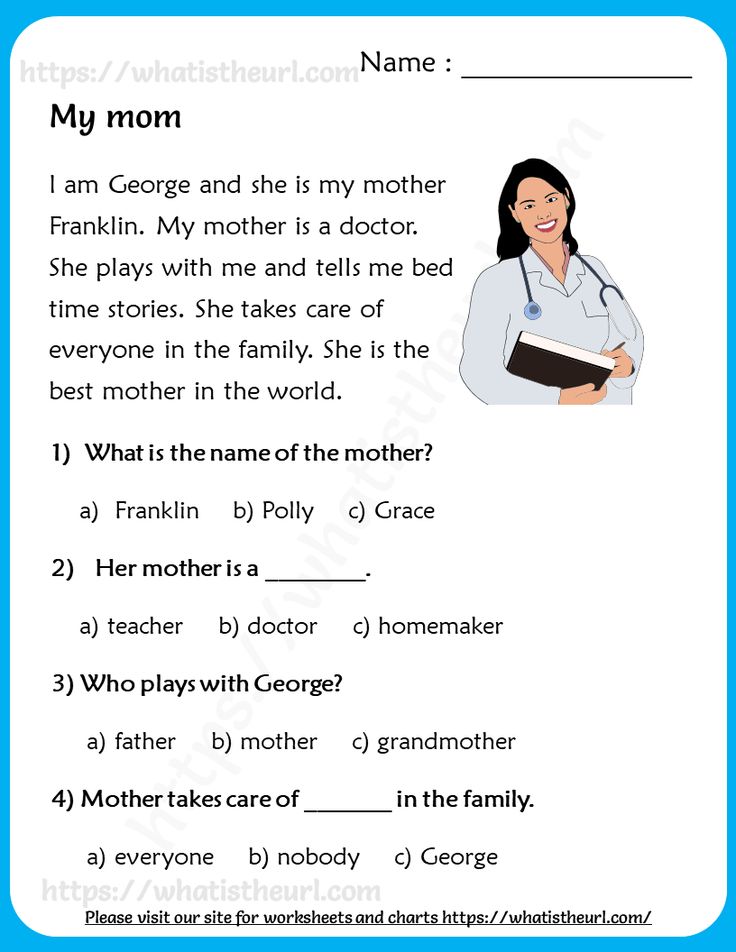 The following are strategies for improving text comprehension that adults with autism spectrum disorders and parents and educators of children with ASD can use.
The following are strategies for improving text comprehension that adults with autism spectrum disorders and parents and educators of children with ASD can use.
Metacognition - thinking about how we think - is the basis for improving understanding while reading. In other words, to improve text comprehension, we must consciously stop while reading and analyze our opinions, perceptions, and thoughts related to what we have read. For example:
Before reading
- Determine the purpose for the upcoming reading. Think in advance about what you should find in the text while reading.
Look at the title of the text and try to figure out what the text might be about.
Skim through the entire text without reading carefully, paying attention to headings and subheadings, bold words and illustrations. Think about what this text might be about.
- Try to remember what you already know about the topic, the author, or this story.
While reading
- Reflect on what you have read after each paragraph or chapter.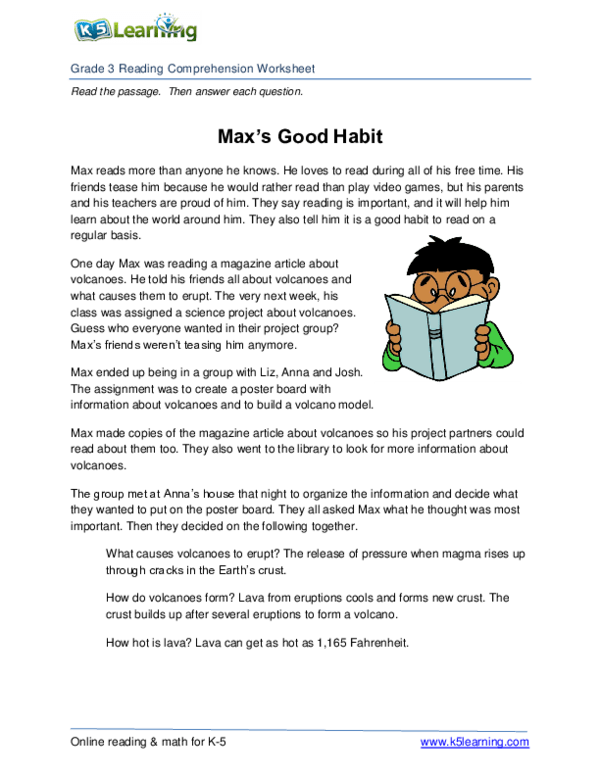
Consider whether you agree with ideas, characters, or facts.
- If you do not understand the meaning of some sentences or paragraphs, write down what you do not understand.
- Write down unfamiliar words to find out their meaning after reading.
After reading
- Think about what you learned while reading.
— Write your own questions for the author.
Think about how what you read relates to your own life.
- Formulate a summary of what you have read.
- Review your notes and try to find answers to your questions through repeated reading, searching the Internet, or talking to another person.
Talk about what you read
Discussing what you read with another person provides another source of information instead of rereading the text. This is especially useful if you don't really enjoy reading. While talking about what you read, you will be able to ask questions that you have, this will allow you to learn more about the point of view of other people and will provide you with the opportunity to put into words what you have read, which will help you remember and understand the text better.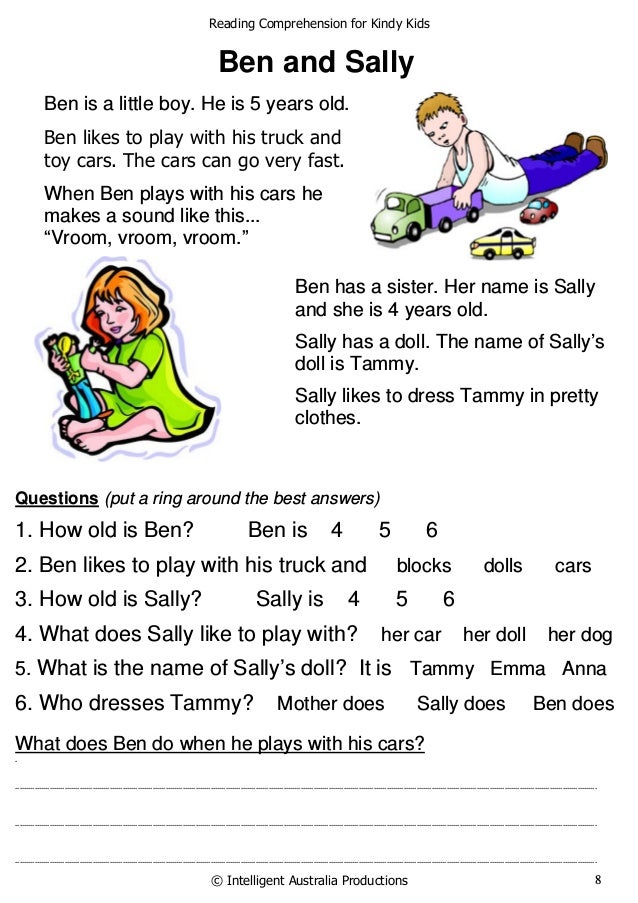
Practice reading as often as possible
The best way to improve reading comprehension is to read as much as possible. It doesn't matter what the person is reading. The more you read, the better your comprehension skills will be. Here the “Matthew effect” takes place, when “he who has will be given and will be multiplied, and what he has will be taken away from the one who does not have.” Students who enjoy reading read a lot and often, and their reading skills improve. Those who do not enjoy reading devote little time to it, as a result, their skills lag more and more behind their peers. That is why our first priority is to motivate children to read. If they enjoy reading comics, sports articles, or online magazines, then encourage them to do so as often as possible.
Take the children to the library as often as possible and let them look at any books they want. Do not try to force on children what you think they should read. We want them to read—as much as possible.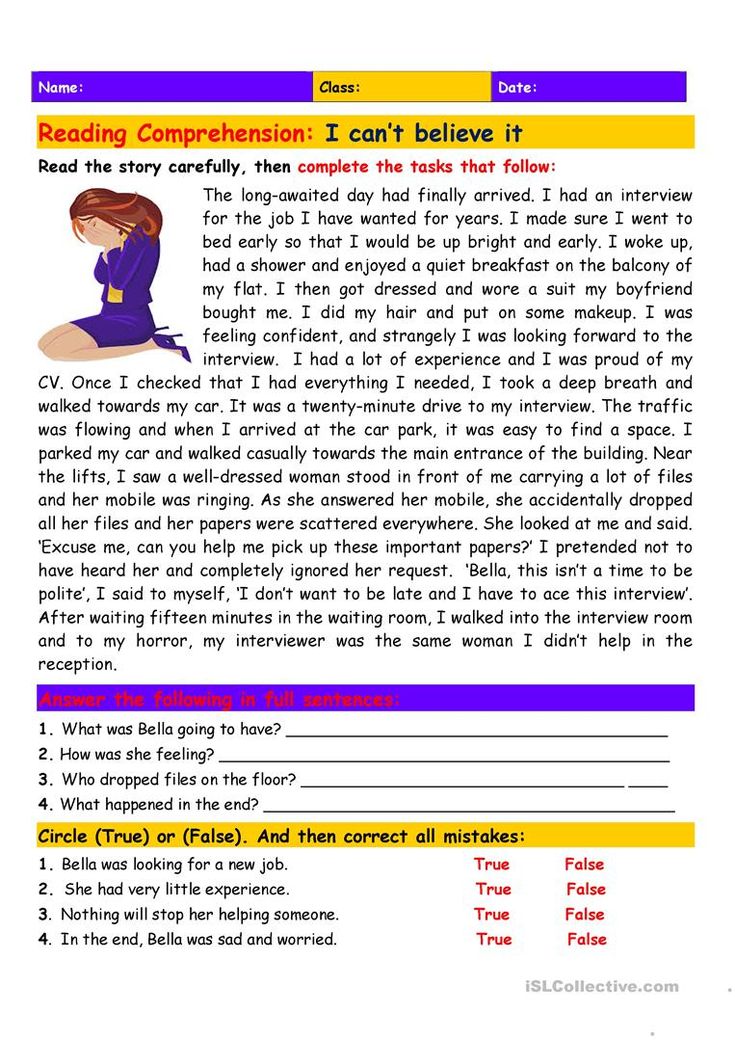 And that's it. If they liked a book by a certain author, then find all the books by that author so they can pick something. If the children are interested in a topic, then find them reading material according to their interest.
And that's it. If they liked a book by a certain author, then find all the books by that author so they can pick something. If the children are interested in a topic, then find them reading material according to their interest.
Reading Motivation
The first task for the unmotivated reader is to find reading material that is directly related to what interests him outside of reading. For example, if a child enjoys watching movies, they may enjoy reading movie reviews online or in movie magazines. You may think that this is not a "real" reading, but it is not at all the case. Many people believe that the only way to develop reading skills is with books. In fact, this is not necessary at all, especially in our age of the Internet.
Also, if children read often about things they are interested in, this will help them become better readers in general, especially if they practice reading comprehension skills in parallel. After the motivation to read begins to form, you can begin to practice reading less interesting materials.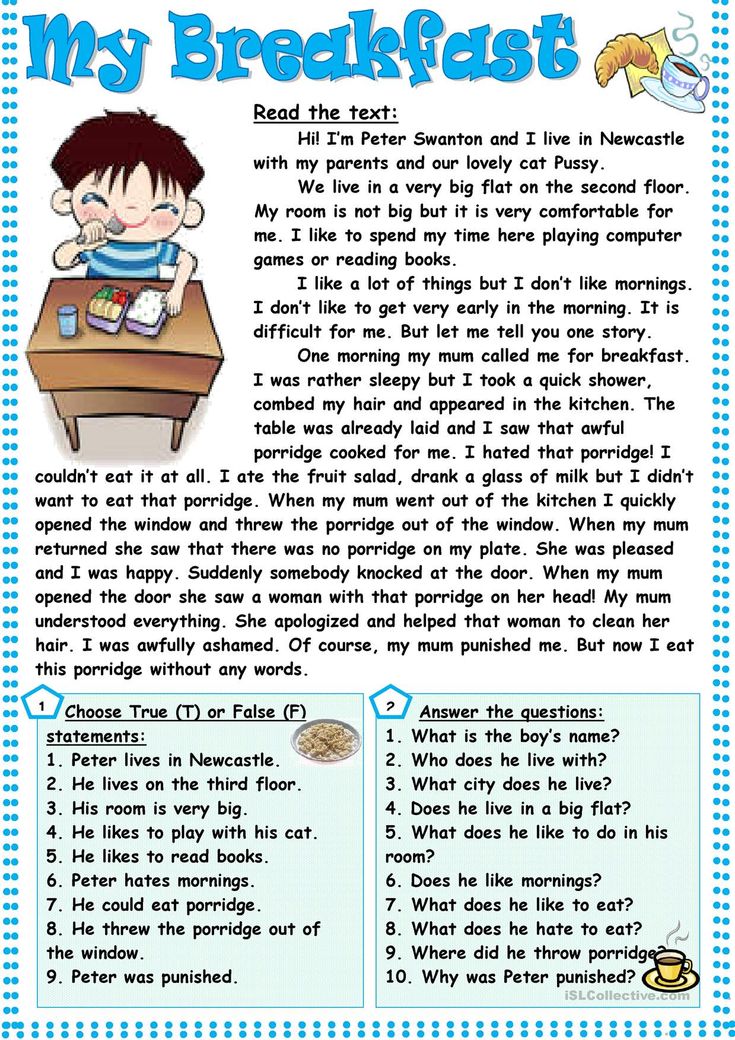 That said, if the strategies to improve comprehension have already been practiced on interesting texts, it will be easier to use them while reading on boring topics.
That said, if the strategies to improve comprehension have already been practiced on interesting texts, it will be easier to use them while reading on boring topics.
Strategies to improve reading comprehension
Start with the strategies that seem most attractive and try them one at a time. Don't try to master every single strategy, sometimes less is more. In other words, it's best to master a few strategies to perfection, rather than practicing all the strategies without exception, which can make it unclear what to use right now. Strategies to improve reading comprehension include:
- Conversational reading: Ask questions, argue, clarify, summarize, and predict as you read.
- Stickers: Use stickers to write words you don't understand, or write exclamation marks on them to mark sentences you like, and question marks to mark phrases or paragraphs you don't understand.
- Reading in pairs: Reading aloud with another person one paragraph at a time.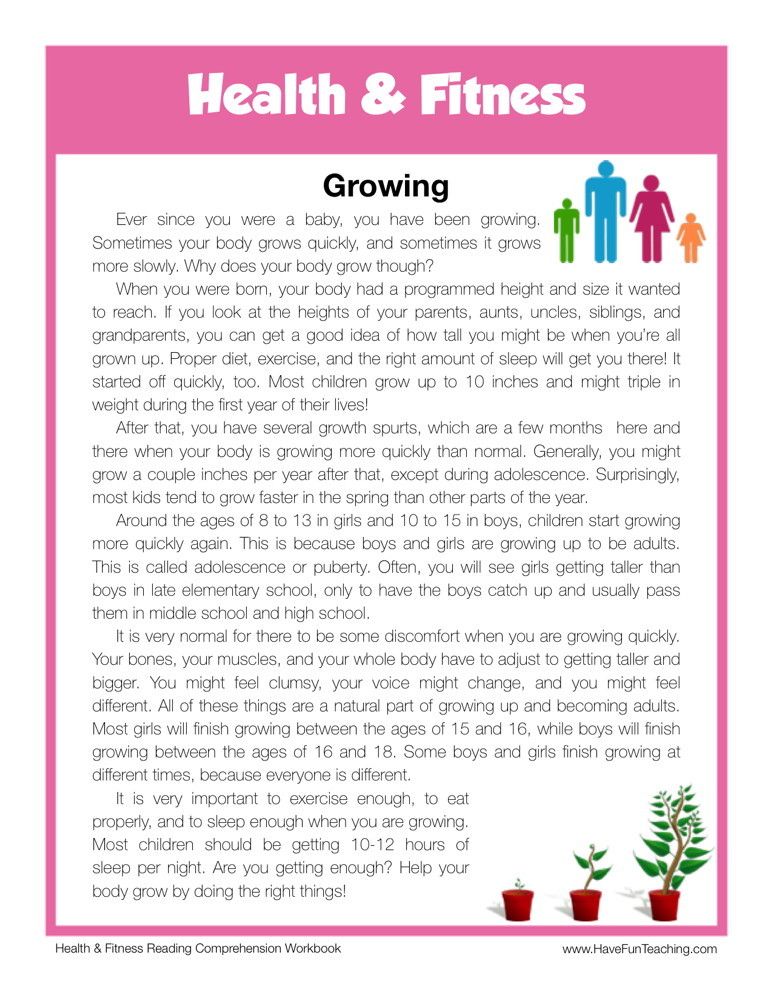 Discuss what you have read with each other after each paragraph.
Discuss what you have read with each other after each paragraph.
- Thinking out loud: As you read aloud in pairs, voice out any thoughts, questions, or misunderstandings that come to mind. For example, if a character or event reminded you of something, stop and talk about that personal association. This technique helps to remember what has been read in the future.
- Re-reading: Read the text again, trying to find answers to the questions that have arisen.
- Text connections: As you read, determine how this text relates to you, to other texts, and to the world in general. In connection with yourself, you need to think about how the read relates to you personally. In World Links, you can link text to what you already know. Finally, in text links, you can link what you've read to what you've read about before.
- The Three Bears Principle: When choosing a book from a library or bookstore, think about whether it is too simple or too complex.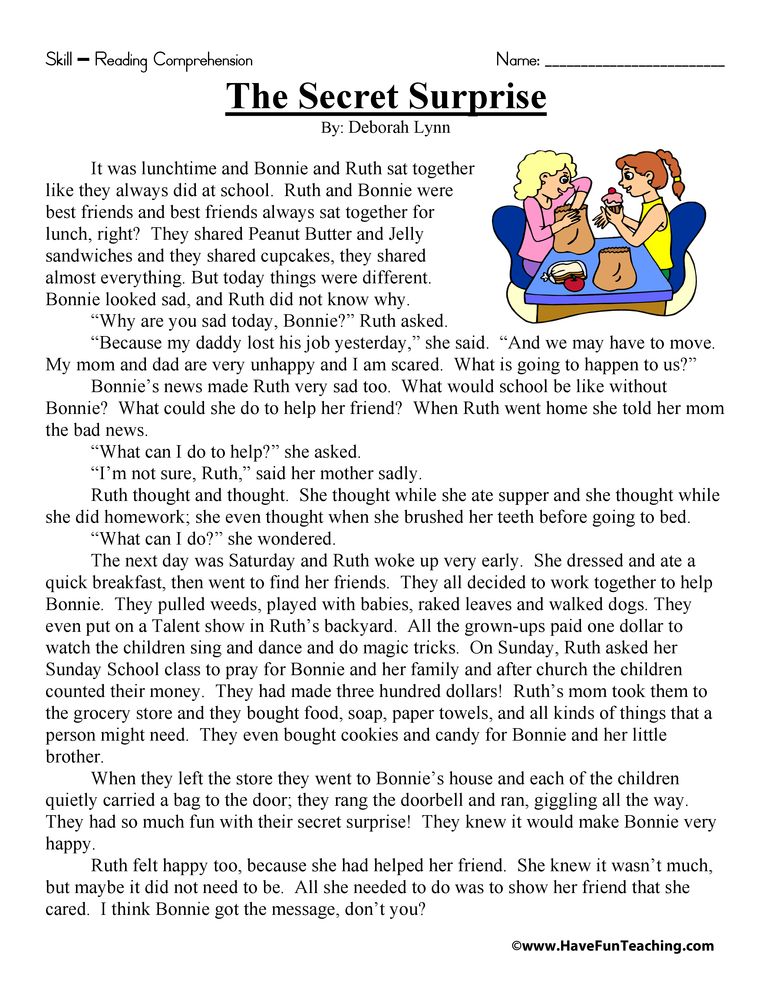 Too simple means that the reader will easily understand all the words or have already read this book many times. Too complex means that there are more than five unfamiliar words on one page or the meaning of the first page is not clear. If the book is just right, then this is a new book, where the reader may not know some of the words on the page, but in general understands what is at stake.
Too simple means that the reader will easily understand all the words or have already read this book many times. Too complex means that there are more than five unfamiliar words on one page or the meaning of the first page is not clear. If the book is just right, then this is a new book, where the reader may not know some of the words on the page, but in general understands what is at stake.
- Dividing the text into parts: Read only a few paragraphs or sentences at a time. Think about what you read using reading strategies before continuing.
- Visualization: While reading, always try to visualize how the characters and the scenes described look like.
- Blogs: Check if there is any blog or forum on the Internet where this topic or book is discussed online, read what other people think about it and try to write your own opinion.
- Journaling: As you read, write down your thoughts in a special journal.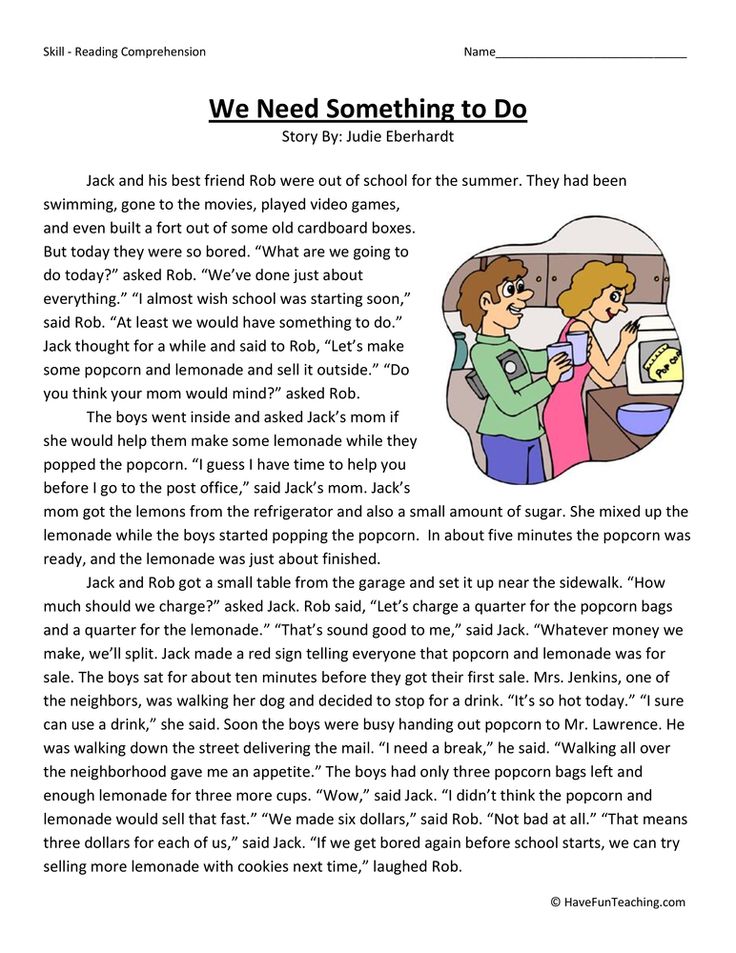
- Graphic organization: Make a chart showing your understanding before, during and after reading.
Progressive Implementation Model
If you are a parent or educator, you can use the Progressive Implementation Model to help a student with autism develop strategies for reading comprehension. First, demonstrate to the student how you yourself read using this strategy. Then use this strategy together, under your guidance. Then ask the student to apply this strategy again (in a different situation) on their own.
Make sure you discuss reading with the student and whether the strategy is helping or not. You may need to model this strategy for the student many times, or practice it many times together until it becomes a natural part of the reading process and the student can apply it completely on his own.
Availability of books to read
If reading skills are too low, use books on topics that are interesting to the student, but with very low reading requirements. As a rule, they have a lot of illustrations and little text. It can be children's encyclopedias and reference books. They keep the reader motivated, their topics are age-appropriate, and the reading isn't too difficult.
As a rule, they have a lot of illustrations and little text. It can be children's encyclopedias and reference books. They keep the reader motivated, their topics are age-appropriate, and the reading isn't too difficult.
You should also pay attention to the following books:
- Books with many photographs and illustrations, which will greatly facilitate understanding.
- Books with fairly large letters.
- Books with a small amount of text on one page so that the amount of text on the page does not cause stress.
- Books that have titles, subtitles, clear definitions of words in the glossary. These books are the easiest to understand.
Relationship between reading and writing
You may be wondering why it is so common to write things down while working on reading comprehension. The reason is that this is another way to better understand and assimilate the material read. For example, if someone finds it difficult to speak verbally about what they have read, then keeping a diary, blogging, or graphing can help analyze what they read and update the information in memory, but without verbal dialogue.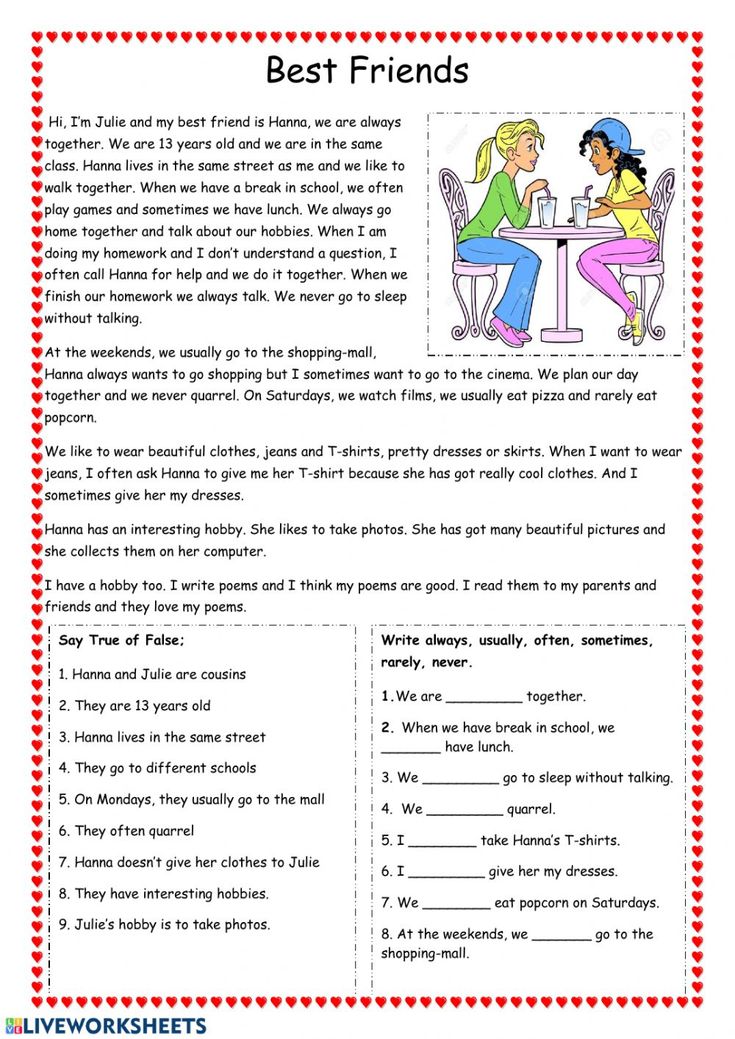
Closing Thoughts
The goal of all reading is to understand the text, so it is hoped that these strategies and ideas will enable you to improve your reading skills or help your child or student reach that goal. Remember that reading is a very complex individual process, and its development must be reflected in an individual educational program.
Autism in adults, Parenting children with autism, Education and training
6 key skills for reading comprehension
For some people, the process of reading is like a walk in the park on a warm summer day, an activity full of pleasure, which is no problem to master. labor. In fact, reading is a complex process that involves many different skills. Together, these skills lead to the ultimate goal of learning to read: comprehensive reading comprehension.
Text comprehension can be difficult for children for many reasons, but regardless of them, knowing what underdeveloped skills this is due to, you will be able to provide your child with the best help.
Let's take a look at the six reading comprehension skills and how you can help your child develop them.
1. Decoding
Decoding is an extremely important step in the reading process. Children use this skill to sound out words they have heard before but not seen written. The ability to decode is the foundation of all other reading skills.
Decoding relies on one of the first language skills to develop, phonemic awareness (this skill is part of a broader set of skills called phonological awareness). Phonemic awareness allows children to hear and distinguish individual sounds in words (also known as phonemes). It also allows them to "play" with sounds in syllables and words.
Decoding also relies on the ability to match individual sounds and letters. For example, to read the word "sun", the child must know that the letter "s" sounds like "s". Understanding the relationship between letters and sounds is an important step towards "voicing" words.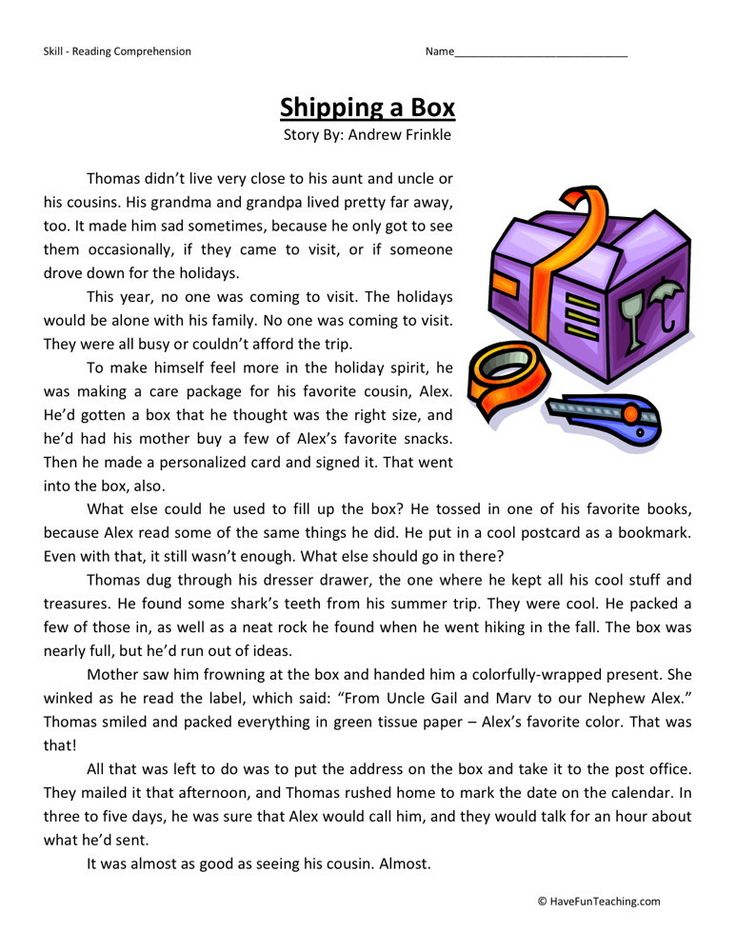
How to help: Many children learn phonological awareness naturally by reading books, listening to songs and poems. But for some children it is not so easy. In fact, one of the earliest signs of reading difficulty is trouble with rhyming, counting syllables, or identifying the first sound in a word.
The best way to help your child improve these skills is to guide them with precise instructions and lots of practice. Children need to be taught how to correctly identify sounds and work with them. You can also develop phonological perception by playing with words, reading poems aloud to your child, or using special computer techniques aimed at developing phonemic perception and decoding.
2. Reading fluently
To read fluently, children must recognize words immediately, including words that do not read as they are written. By developing reading fluency, the child increases not only reading speed, but also reading comprehension.
Decoding and reading each word can be a lot of work. Word recognition is the ability to recognize a word instantly just by looking at it, without having to read it out loud. When children can read quickly and with almost no errors, they are said to be able to read "fluently".
People who can read fluently read fluently and rhythmically. They use the context to understand the meaning and change the intonation in their voice depending on what they are reading about. The ability to read fluently is critical to a good understanding of the text.
How to help: Word recognition can be a big hurdle for beginning readers. Usually a person needs to see a word from 4 to 14 times in order to learn to automatically recognize it. But, for example, children diagnosed with dyslexia may need to see the word up to 40 times.
Many children have difficulty reading fluently. To improve word recognition and other reading skills, children need help and a lot of practice. The best way to strengthen these skills is to practice reading books. It is important to choose books that are appropriate for the child's reading level.
The best way to strengthen these skills is to practice reading books. It is important to choose books that are appropriate for the child's reading level.
3. Vocabulary
To understand what you read, you need to understand at least most of the words in the text. A rich vocabulary is a key component of text comprehension. Students can learn new words during class, but they usually learn the meaning of words through everyday situations and while reading.
How to help: The more new words children learn, the more their vocabulary grows. You can help your child develop vocabulary by talking to him often about different topics, introducing him to new words and concepts. Word games and funny jokes are also fun ways for children to reinforce these skills.
Daily reading together also helps build vocabulary. When reading aloud to your child, stop when you encounter new words and explain their meaning. But it is also important that the child reads independently.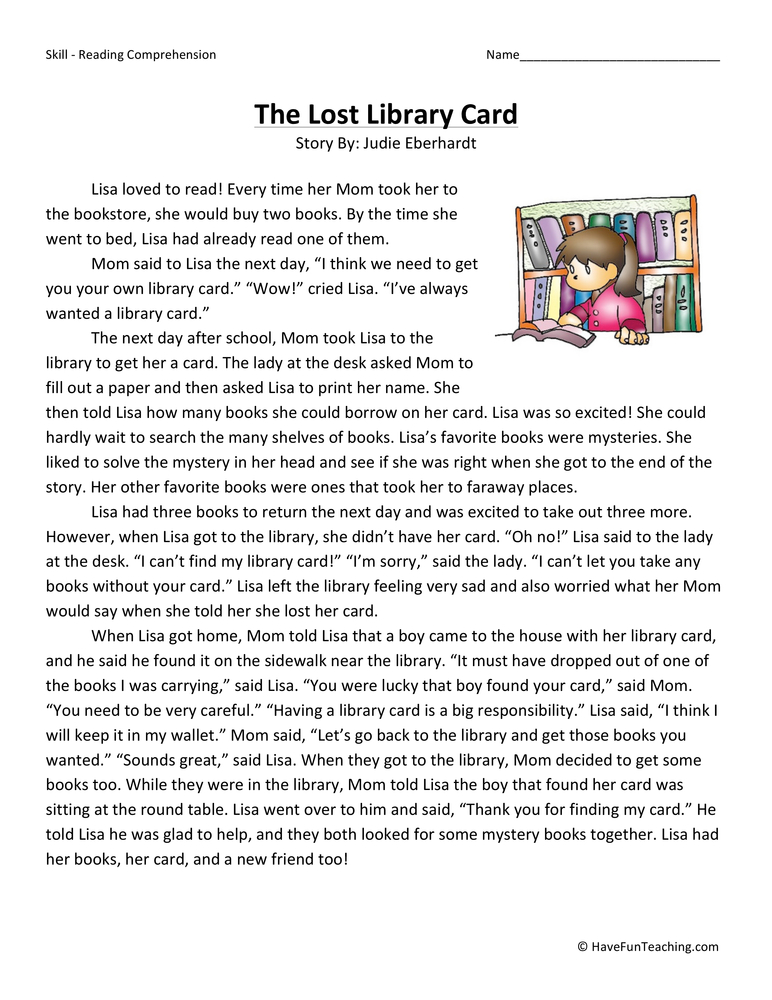 Even if there is no one to explain the meaning of a new word, the child can guess its meaning from the context, and also learn with the help of a dictionary.
Even if there is no one to explain the meaning of a new word, the child can guess its meaning from the context, and also learn with the help of a dictionary.
Teachers can also help by choosing interesting words to study and learning them all together in class. To practice vocabulary, the teacher can engage students in dialogue during the lesson, or play word games to make learning new words fun.
4. Sentence construction and cohesion
Understanding how sentences are built can seem like a skill necessary for writing. The same can be said about the connection of ideas within and between sentences, which is called cohesion. But these skills are also important for reading comprehension.
Knowing how ideas connect at the sentence level helps children make sense of passages and entire texts. This also leads to what is called coherence, or the ability to relate ideas to other ideas in a common work.
How to help: Explain the basics of sentence construction to your child.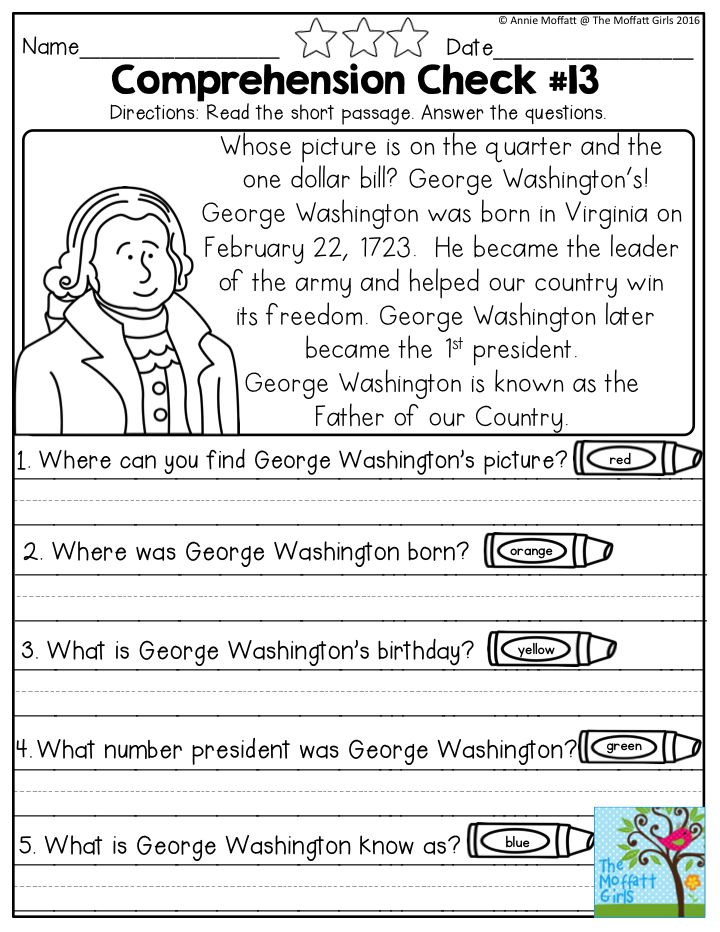 Work with him to connect two or more thoughts, both in writing and orally.
Work with him to connect two or more thoughts, both in writing and orally.
5. Expanding horizons and argumentation
Many children associate what they have read with previous experiences, so it is important to broaden your child's horizons so that they have some idea of the world around them before they start reading. It is also important to teach the child to “read between the lines” and find meaning where it is not literally written.
How to help: Your child can broaden their horizons through reading, socializing, watching movies and TV shows, and exploring art. Also many things come with years of personal experience.
Open up opportunities for your child to gain new useful knowledge in different areas and discuss with him what you have learned from the experience, both together and separately. Help your child make connections between new and old knowledge and ask questions that require extended answers and thoughtful explanations.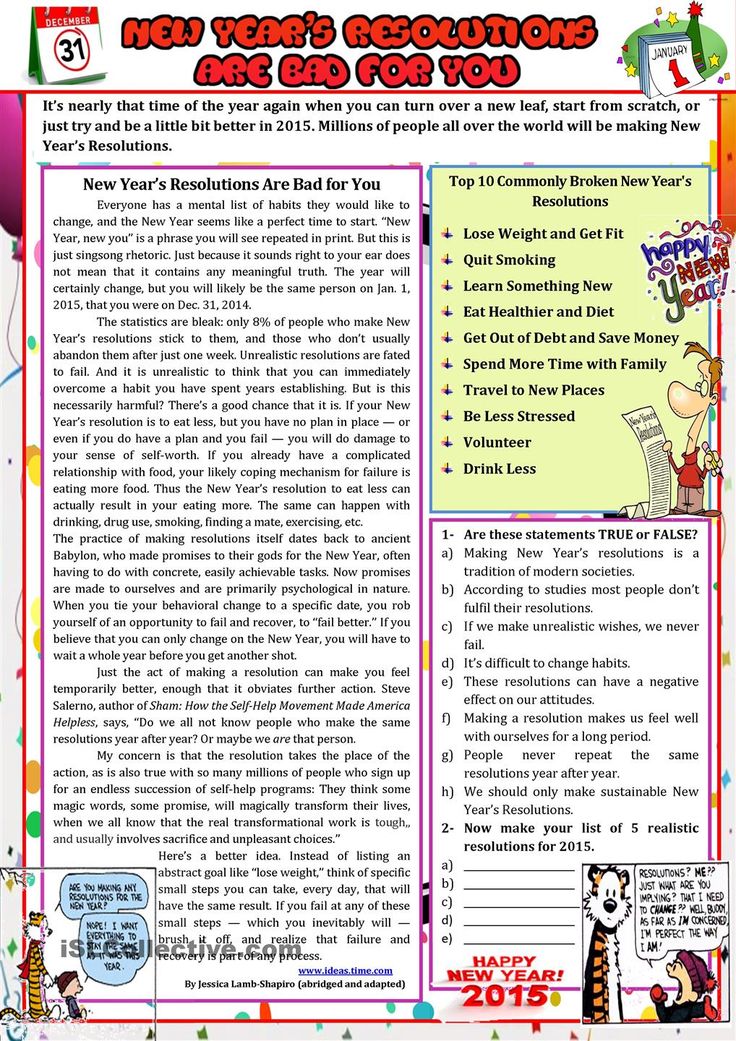
You can also read these tips on how to use cartoons to help your child learn to judge for themselves.
6. Working memory and attention
These two skills are part of a group of skills also known as executive functions. They are different, but closely related.
When children read, attention allows them to absorb information from the text. Working memory helps them retain this information and use it to make sense and gain knowledge from what they read.
The ability to self-control while reading is also related to executive functions. The child must be able to recognize when he does not understand something, stop, go back and reread, so that there is no doubt about the understanding of what he read.
How to help: There are many ways to help your child improve working memory, and it doesn't have to look like a lesson. There are many games and daily activities that can help develop working memory in a way that your child won't even notice!
To improve your child's attention span, look for reading materials that interest and/or motivate your child.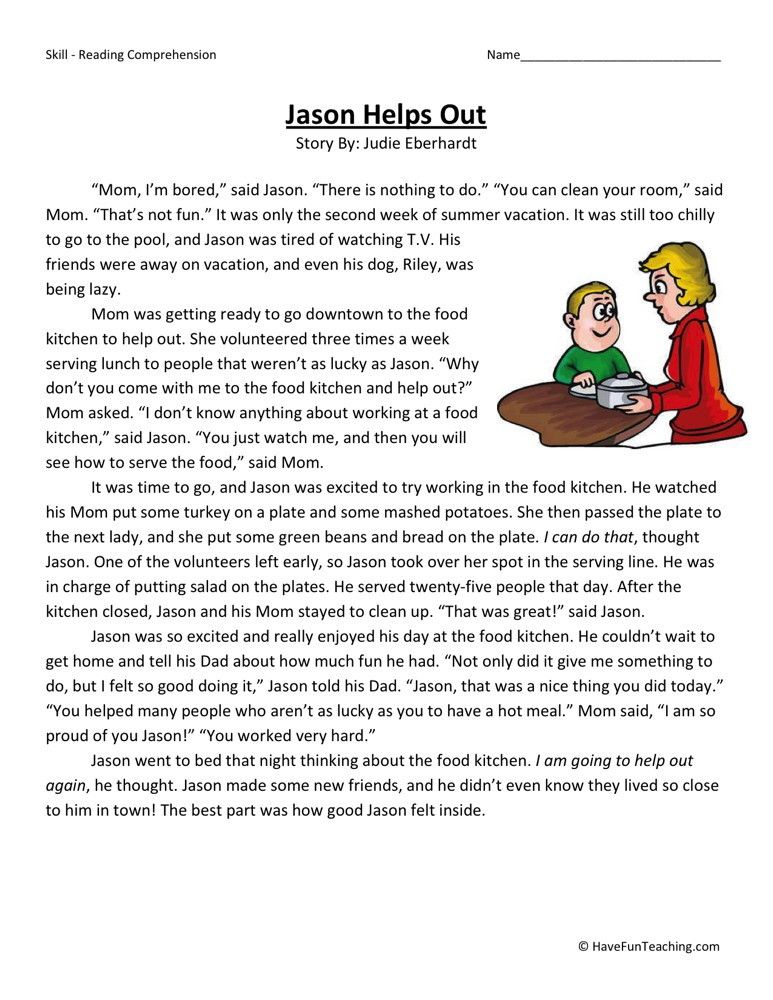 For example, some children love graphic novels. Teach your child to stop and reread the text when something is not clear to him. And show him how you “think out loud” when you read to make sure it makes sense.
For example, some children love graphic novels. Teach your child to stop and reread the text when something is not clear to him. And show him how you “think out loud” when you read to make sure it makes sense.
More ways to help with reading comprehension
When children have difficulty learning the skills listed above, they may find it difficult to fully understand what they read.
Find out what might be causing your child's reading difficulties. Remember, if a child has difficulty reading, it does not mean that he is not smart. But some children need extra support to successfully develop reading skills. The sooner you contact a specialist or start applying a special corrective technique, the less stress and lag in learning and development your child will receive. Pay attention to the computer technique Fast ForWord, aimed at developing the skills of phonemic perception, decoding, memory, concentration and other executive functions.